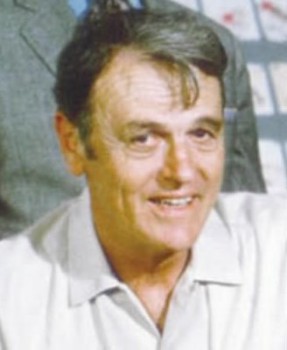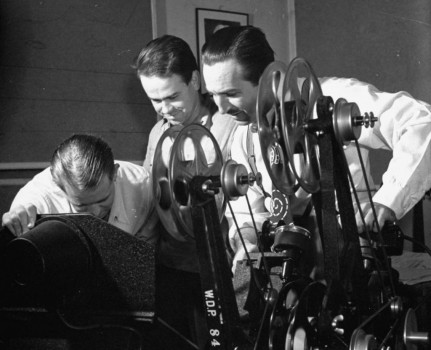Jack Kinney – Kinney was known for being fun and a bit of a “screwball.” He directed the Goofy series of shorts and was the inventor of the “How to” concept when Pinto Colvig quit doing the voice. Instead of planning out the timing ahead of time, Kinney would let his animators explore their scenes and hand him their pencil tests. He would cut the film together to determine the pacing and then reassign scenes to animators. His directing style was fast and loose and unlike his fellow Disney directors at the time, Kinney made many contributions to the story department. He never got credit for this, however, because Walt didn’t believe in giving multiple credits to individuals on a picture. Don Peri says that the “least-Disney” shorts were directed by Kinney.
Woolie Reitherman – Reitherman placed animation first above story. He rose through the ranks as an animator on Jack Kinney shorts, where his specialty was action animation. Walt Disney trusted Woolie’s judgement and believed he had his finger on the public interest. He was the first person Walt assigned to be a single director for an animated feature when he was given total control on The Sword in the Stone. He liked to explore scenes to an exhausting level to make sure they were right. Many animators disliked working with him due to his preference for reusing animation in films to speed up production. One of his biggest contributions to the studio came after Walt’s death, where he was responsible for stabilizing egos and talent while the studio was without a leader to keep the peace.
What emerges from this presentation is an image of a group of men dedicated to their craft trying to find balance in a world lead by Walt. It is clear that Walt wasn’t easy to work for, but his methods were successful in producing quality films that have remained fresh longer than anybody could have anticipated. The role of an animation director at Disney grew considerably, but under Walt’s leadership they were making Walt’s films, not their own. After Walt’s death, the studio struggled to find itself for a while before the right teams were in place to revolutionize the industry again.
In the modern Lasseter era, the emphasis is on creative freedom as long as there are strong characters and unique worlds behind each film. Lasseter’s leadership style creates a democracy and a brain trust ensures that multiple opinions are weighed before moving forward with a project. Directors are often changed out midway through to keep momentum moving, and modern technology makes it easier to make changes on the fly if something isn’t working. But it is clear that today’s animation directors owe some credit to those that came before them and made the medium what it is today.
Alex is currently watching and reviewing all of Disney’s films in chronological order. You can follow along here.



